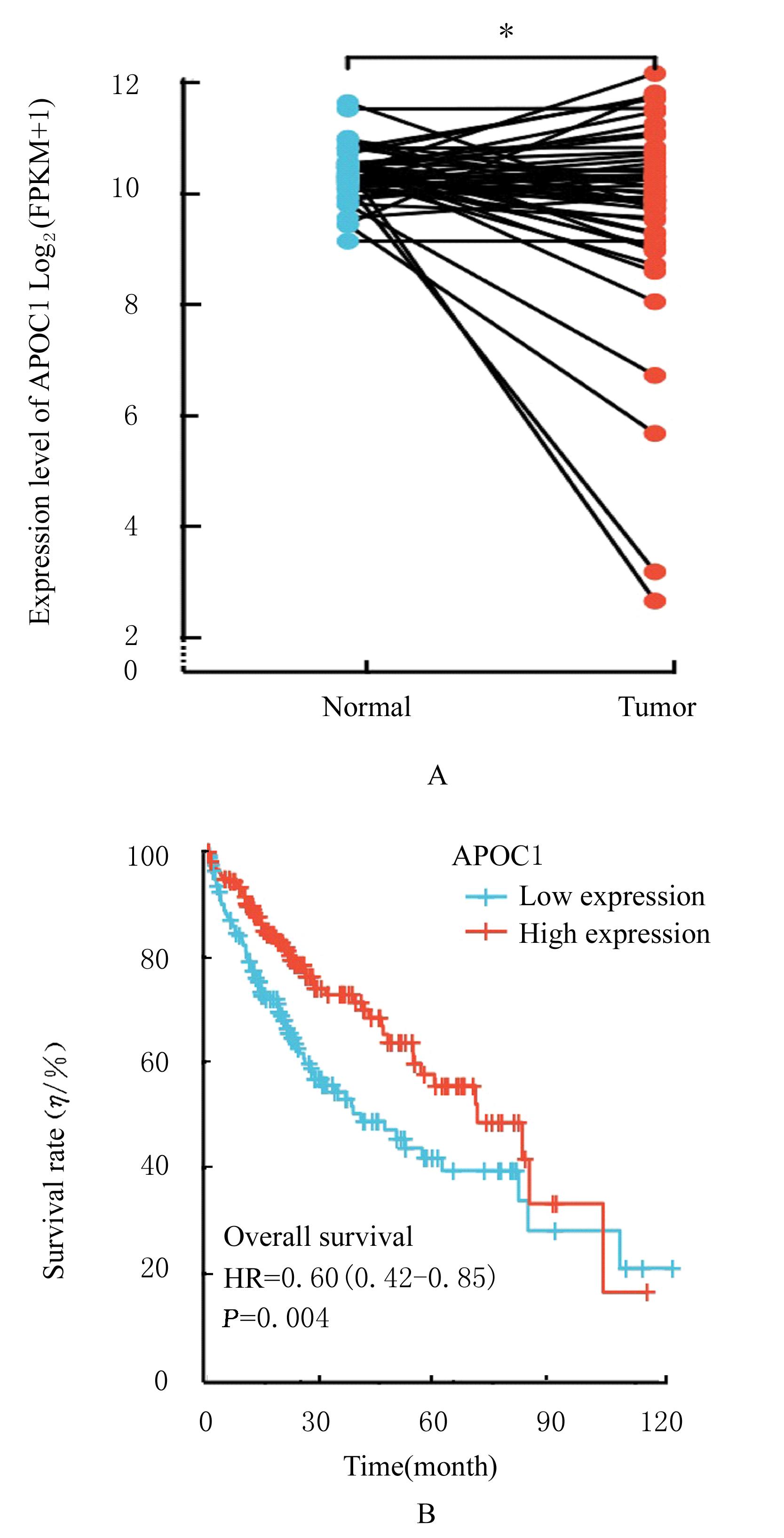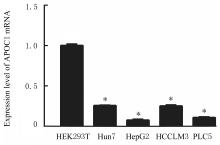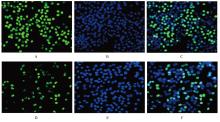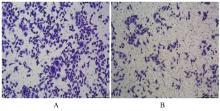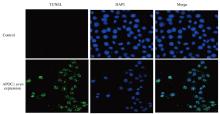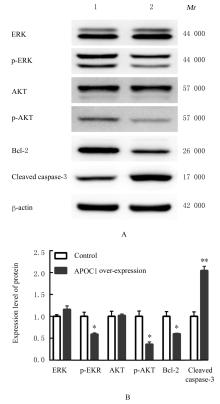吉林大学学报(医学版) ›› 2024, Vol. 50 ›› Issue (1): 128-135.doi: 10.13481/j.1671-587X.20240116
• 基础研究 • 上一篇
载脂蛋白C1表达对人肝癌HepG2细胞增殖和凋亡的影响及其机制
- 1.锦州医科大学生命科学研究院,辽宁 锦州 121000
2.联勤保障部队三亚康复疗养中心检验病理科,海南 三亚 572000
3.锦州医科大学附属第三医院肿瘤科,辽宁 锦州 121000
Effect of apolipoprotein C1 expression on proliferation and apoptosis of human liver cancer HepG2 cells and its mechanism
Huijuan SONG1,Zhenhua XU2,Dongning HE3( )
)
- 1.Institute of Life Science,Jinzhou Medical University,Jinzhou 121000,China
2.Department of Pathology,Sanya Rehabilitation and Recuperation Center,Joint Logistics Support Force,Sanya 572000,China
3.Department of Oncology,Third Affiliated Hospital,Jinzhou Medical University,Jinzhou 121000,China
摘要:
目的 探讨载脂蛋白C1(APOC1)表达对肝癌细胞增殖和凋亡的影响,并初步阐明其相关分子机制。 方法 通过癌症基因组图谱(TCGA)数据库分析肝癌患者癌组织中APOC1 mRNA表达水平及其与患者预后的关系。采用实时荧光定量PCR(RT-qPCR)法检测不同肝癌细胞中APOC1 mRNA表达水平,筛选APOC1低表达的人肝癌HepG2细胞作为研究对象。将pcDNA3.1-APOC1质粒转染至HepG2细胞过表达APOC1(APOC1过表达组),以转染空载体pcDNA3.1的HepG2细胞为对照组,采用MTS法和5-乙炔基-2'-脱氧尿嘧啶核苷(EdU)染色法检测2组细胞增殖活性和增殖率,Transwell小室实验检测2组细胞中迁移细胞数,流式细胞术和TUNEL法检测2组不同细胞周期细胞百分率和细胞凋亡率,Western blotting法检测2组细胞中细胞外调节蛋白激酶(ERK)、磷酸化ERK(p-ERK)、蛋白激酶B(AKT)、磷酸化AKT(p-AKT)、B细胞淋巴瘤2(Bcl-2)和活化型含半胱氨酸的天冬氨酸蛋白水解酶3(cleaved caspase-3)蛋白表达水平。 结果 TCGA数据库分析,肝癌患者癌组织中APOC1 mRNA表达水平低于正常肝组织(P<0.05),并且APOC1 mRNA低表达组肝癌患者预后较差。RT-qPCR法检测,HepG2细胞中APOC1 mRNA表达水平最低,选取该细胞作为后续研究对象。与对照组比较,APOC1过表达组细胞增殖活性和增殖率明显降低(P<0.05或P<0.01),迁移细胞数明显减少(P<0.01), S期细胞百分率和细胞凋亡率明显升高(P<0.01)。与对照组比较,APOC1过表达组细胞中p-ERK、p-AKT和Bcl-2蛋白表达水平明显降低(P<0.05),cleaved caspase-3蛋白表达水平明显升高(P<0.01)。 结论 APOC1高表达能够抑制人肝癌HepG2细胞的增殖,并诱导细胞凋亡,其机制可能与其抑制 p-ERK、p-AKT、Bcl-2蛋白表达和促进cleaved caspase-3蛋白表达有关。
中图分类号:
- R735.7

